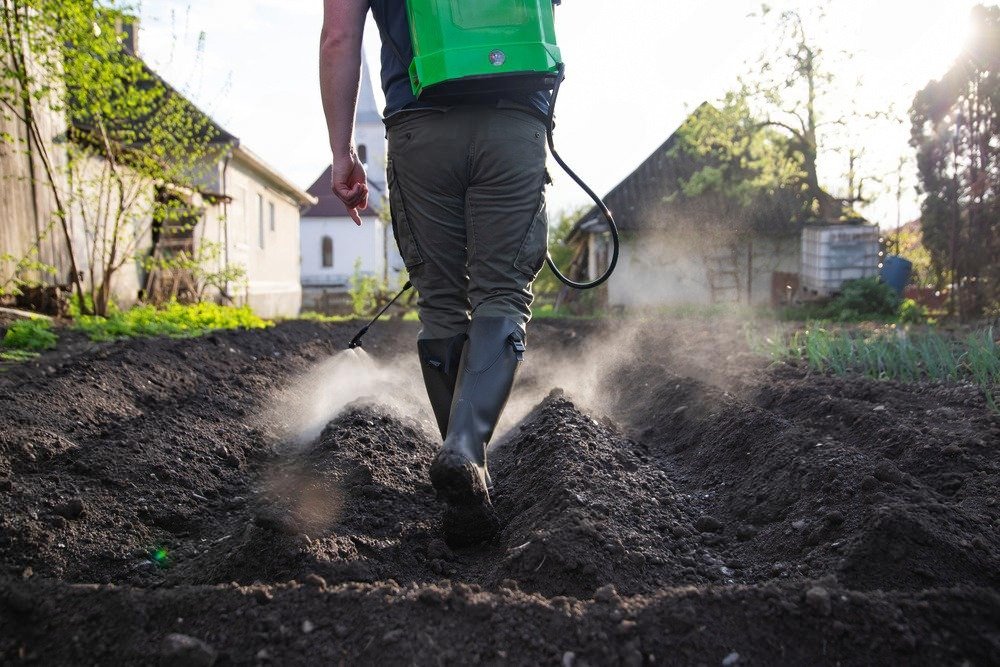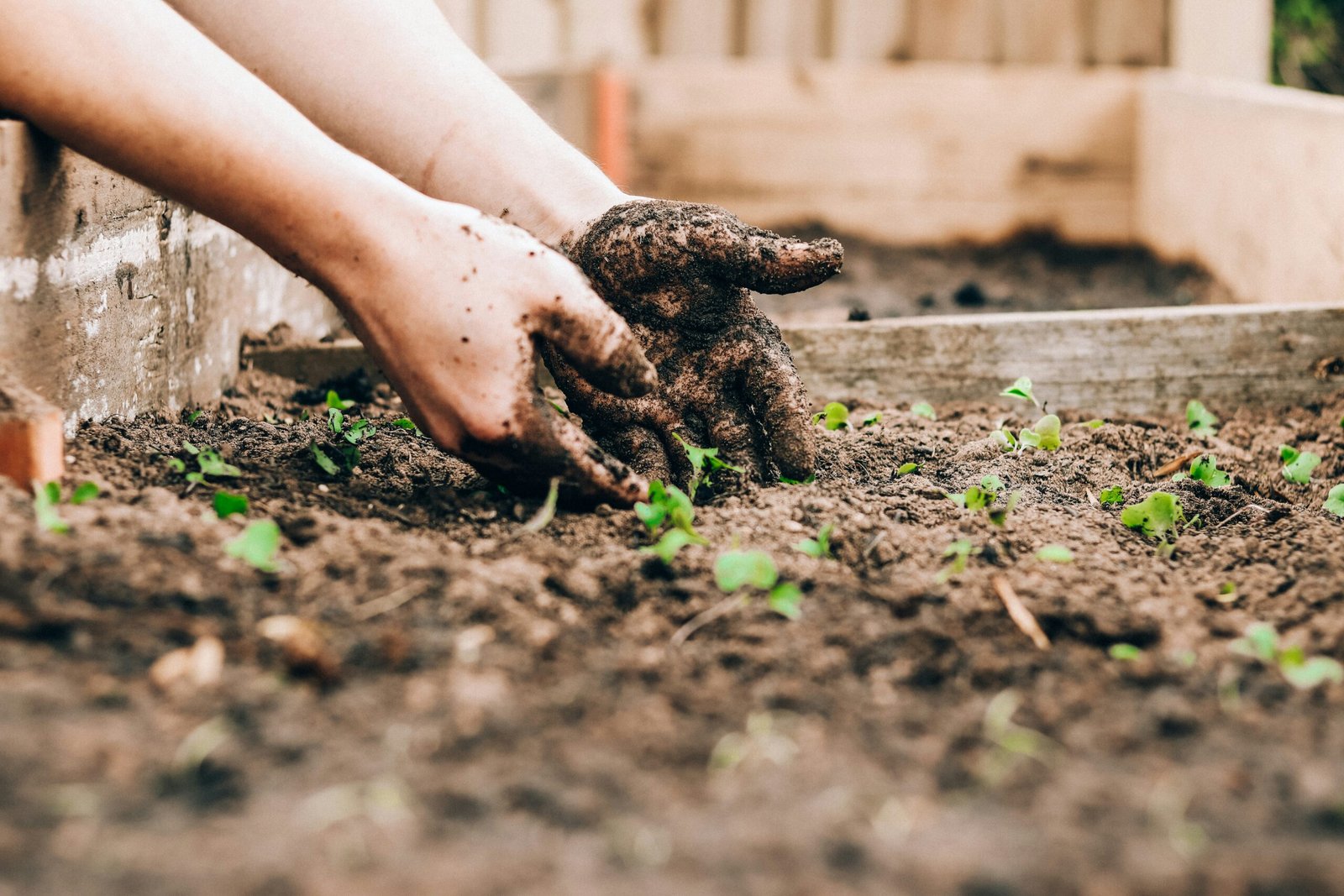Stop me if this sounds familiar…
You finally carve out time to check on your garden—maybe it’s early morning, your coffee in hand, the sun just rising. But instead of proud green leaves and little bursts of growth, you find holes. Drooping stems. Aphids clinging to your kale. Slugs partying like it’s midnight on your lettuce.
You think: I didn’t sign up for this.
In my first season, I remember staring at lacework leaves at 6 a.m., coffee in hand, wondering if I should just give up.
You don’t want to spray something toxic. You care about the bees, your pets, your kids. But you also don’t want to lose your garden to a bunch of bugs. And the so-called “natural solutions” you found on Pinterest? Most of them either don’t work, or they make things worse.
Here’s the thing: The good news? Natural pest control for gardens does work, and with the right methods, you can protect your plants safely. In my own beds, switching to natural pest control for gardens cut aphid damage in half within two weeks.
I’ve been in your shoes, overwhelmed by pests and unsure what’s safe to use. And over time, I’ve learned what really makes a difference. In this guide, you’ll get simple, proven, natural pest control methods that actually do the job—without harming your garden’s ecosystem. These organic pest control methods are trusted by gardeners worldwide because they protect plants while keeping ecosystems intact.
No fluff. No greenwashing. Just organic solutions that work.
Why Natural Pest Control for Gardens Matters
Chemical pesticides might seem like the fast track to a pest-free garden—but they come with a long list of hidden costs.
First off, most commercial pesticides don’t discriminate. They kill the good insects along with the bad. Ladybirds, bees, butterflies—gone. And once you knock out those natural predators, your pest problem often comes roaring back even worse than before.
Then there’s the ripple effect. Harsh chemicals seep into your soil, get washed into local waterways, and leave residues on your food. If you’ve got pets, kids, or you’re growing to eat, that’s a risk you don’t want hanging over your garden.
Organic pest control takes a different approach. Instead of trying to eliminate all insects, you work with nature to create a healthy, balanced ecosystem where pests are kept in check naturally. By focusing on natural pest control for gardens, you’ll encourage balance rather than endless battles
The benefits go beyond just your garden:
- Your plants get stronger over time because the soil stays healthy.
- You attract pollinators and other helpful insects instead of driving them away.
- You create a safer space for your family, pets, and local wildlife.
Going natural isn’t just about being eco-friendly—it’s about long-term success. And once you get the hang of it, you’ll find it’s not only more sustainable, it’s also far more satisfying.
Identify Before You Act
Before you grab the garlic spray or start sprinkling diatomaceous earth everywhere, slow down. One of the biggest mistakes gardeners make is treating pests without actually knowing what they’re dealing with.
Every pest has a different weakness. What works on aphids won’t do much to deter caterpillars. And spraying randomly can backfire, especially if you end up killing off the beneficial bugs that were helping you in the first place. Matching the right organic pest control methods to the specific pest saves time and protects helpful insects. I learned this the hard way: I sprayed randomly once and wiped out ladybirds – aphids exploded a week later.

Here’s how to get smart about it:
Step 1: Know the Usual Suspects
Some of the most common garden pests include:
- Aphids – tiny green, black, or white bugs clustered on stems or undersides of leaves. They suck sap and cause curling or yellowing leaves.
- Slugs and snails – leave behind slime trails and chew ragged holes in leaves.
- Whiteflies – small, powdery-looking flies that swarm when disturbed. They weaken plants by feeding on sap.
- Caterpillars – chew large holes or entire chunks from leaves. Often hide underneath.
- Spider mites – super tiny, often leave webbing on leaves and cause speckled yellowing.
Step 2: Check for Signs Early
Don’t just look at the tops of your leaves. Flip them over. Check stems, soil, and the base of your plants. Early signs to watch for:
- Sticky residue (called “honeydew”) or black mould
- Yellowing or distorted leaves
- Bite marks or chewed edges
- Webbing or clumps of eggs
Step 3: Match the Solution to the Pest
Once you’ve figured out who’s causing the damage, then you can choose the right organic method. You’ll waste less time, and you’ll avoid harming the good bugs that are quietly doing their job.
Think of this step like diagnosing an illness before taking medicine—you want to treat the right problem, the right way.
Prevention is Powerful
If you’re constantly battling pests, it’s time to shift your mindset. The best pest control strategy? Stop the infestation before it starts. Eco-friendly garden pest solutions, like crop rotation and physical barriers, often prevent infestations before they begin.
Prevention might not feel as satisfying as wiping out a colony of aphids overnight, but it’s the most effective long-term solution. A healthy, balanced garden is naturally more resistant to pests and needs way less intervention from you. What moved the needle for me was prevention. Once I fixed watering and mulch, I stopped chasing every new pest.
Many gardeners are surprised that natural pest control for gardens often results in healthier, more resilient plants. Here’s how to stack the odds in your favour:
Build Healthy Soil
Healthy plants start with healthy soil. Strong, nutrient-rich plants are less attractive to pests and bounce back faster when damaged. Use compost, mulch, and organic matter regularly. Avoid overwatering, which can weaken roots and attract fungus gnats or slugs. Simple eco-friendly garden pest solutions like composting and mulching also discourage pests naturally. When I started top-dressing with compost each spring, my brassicas bounced back faster from caterpillar nibbles. For a simple, soil-first feeding plan that strengthens plants against pests, see Best Organic Fertilizers for Thriving Veggies and Flowers.
Try Companion Planting
Some plants naturally deter pests—or attract the good bugs that eat them. Use this to your advantage:
- Marigolds deter aphids, nematodes, and whiteflies.
- Basil repels flies and mosquitoes.
- Nasturtiums attract aphids away from other crops (a “trap plant”).
- Chives and garlic help fend off aphids and beetles.
Planting strategically means less spraying later. I tuck nasturtiums at the row edges. They collect aphids like magnets and keep my peppers remarkably clean. Learn which flowers support predators: UC IPM – Insectary (companion) plants.
Want a full, no-fluff pairing map? Dive into the Companion Planting Guide: Best Plant Pairings for a Healthier Vegetable Garden to deter pests naturally and boost yields.
Rotate Your Crops
If you plant the same thing in the same spot year after year, pests that like that plant will keep coming back stronger. Rotating crops breaks the pest lifecycle and helps keep your soil healthy.
Use Physical Barriers
Sometimes the simplest solutions are best:
- Fine mesh or floating row covers keep cabbage moths and carrot flies out.
- Copper tape repels slugs and snails.
- Netting can stop birds and butterflies before they lay eggs.
Think of barriers as setting boundaries – literally. A £10 roll of insect mesh saved my kale—zero cabbage white eggs the entire month after I covered it.
Organic Pest Control for Gardens That Actually Works
This is what you came for: natural, proven methods that genuinely get results. Not guesswork. Not folklore. Just straightforward solutions that can handle pests without hurting your plants, pollinators, or peace of mind.
Neem Oil
Neem oil is one of the most reliable organic pest control methods and a staple in natural gardening. I spot-treat with neem at dusk. By day three the sticky honeydew is gone and new growth looks normal.
- Best for: Aphids, whiteflies, spider mites, mealybugs
- How to use it: Mix with water and a few drops of mild soap. Spray in the early morning or evening (never in direct sun).
- Heads up: It doesn’t kill on contact. It disrupts the pest’s life cycle, so it may take a few days to see results.
Insecticidal Soap
Think of this as a gentle but effective way to get rid of soft-bodied insects.
- Best for: Aphids, spider mites, thrips, and whiteflies
- How to use it: Spray directly onto pests, making sure to coat the undersides of leaves.
- Heads up: Buy a ready-made organic version, or make your own with a natural liquid soap—just avoid anything with degreasers or antibacterial additives.
For step-by-step use on aphids, see University of Minnesota Extension: Aphids in home yards and gardens.
Diatomaceous Earth
This powder is made from fossilised algae. It’s harmless to humans and pets but deadly to insects with exoskeletons. It’s one of the simplest eco-friendly garden pest solutions available to home gardeners. On damp slug nights, I reapply a light dusting before sunset. My lettuce losses dropped from “whole tray” to “one or two.”
- Best for: Slugs, beetles, ants, earwigs
- How to use it: Dust around the base of plants or on leaves when dry.
- Heads up: It only works when dry, so you’ll need to reapply after rain or watering.
Garlic & Chilli Spray
Garlic & chilli spray is a simple non-toxic pest control for vegetables and works as a natural repellent.
- Best for: Caterpillars, aphids, and general deterrence
- How to use it: Blend garlic and chilli with water, strain, and spray on plants. Great as a preventative measure.
- Heads up: Test it on a small area first—some plants (like young seedlings) may be sensitive.
My tip: strain twice and test a leaf first. Once I skipped that and singed a tray of tender seedlings.
Timing + Reapplication = Results
With natural solutions, you won’t get “spray once and forget it” results. Most treatments need reapplying every 5–7 days, especially after rain. Think of them as a maintenance plan, not a magic fix.
Invite Nature to Help You
The most powerful pest control strategy? Beneficial insects for pest control can do the hard work for you. The season I installed a small insect hotel, I noticed hoverflies everywhere and my aphid hotspots vanished.
When you create a garden that welcomes beneficial insects, you build a self-sustaining defence system. These natural predators quietly hunt down pests while you get on with enjoying your garden.

Know Your Allies
These beneficial insects for pest control are nature’s own army against common pests. Encouraging beneficial insects for pest control is one of the most effective long-term strategies.
- Ladybirds (and their larvae) – Aphid assassins. A single ladybird can eat 50 aphids a day.
- Lacewings – Their larvae are tiny monsters that devour aphids, mealybugs, thrips, and mites.
- Parasitic wasps – Lay eggs inside caterpillars and other pests, stopping them before they do real damage.
- Hoverflies – Their larvae feed on aphids, and adults are excellent pollinators.
- Ground beetles – Feast on slugs, cutworms, and root maggots at night.
When I see ladybird larvae, I pause all sprays for a week. They clean up faster than anything I could apply.
Create a Bug-Friendly Habitat
If you want these insects to stick around, give them a reason to stay:
- Plant diversity – Include flowering herbs like dill, coriander, and yarrow. These attract predatory insects with nectar and pollen.
- Avoid spraying indiscriminately – Even organic sprays can harm your allies. Target your treatments carefully. The smartest approach is to combine prevention with targeted natural pest control for gardens solutions.
- Provide shelter – A mix of shrubs, tall grass, and even insect hotels gives your helpful bugs somewhere to live and reproduce.
- Let nature be a little messy – Over-tidying can strip your garden of the very habitat that these predators need.
Encouraging these natural pest controllers won’t give you instant results—but over time, it builds balance. And balance means fewer infestations, less spraying, and a more resilient garden overall.
Need low-effort insectary plants? Start with these easy winners: Top 10 Must-Have Herbs for an Easy Kitchen Herb Garden.
Common Mistakes in Natural Pest Control for Gardens
Even with the best intentions, some natural pest control efforts backfire. Here are the most common missteps that can undermine your progress—and what to do instead.
❌ Overapplying Organic Treatments
Just because something is natural doesn’t mean “more is better.” Neem oil, garlic spray, and diatomaceous earth can all harm beneficial insects if used too heavily or too often. Been there – my overzealous diatomaceous earth phase thinned out ground beetles, and the slug problem got worse.
✅ Do this instead: Follow the instructions closely, treat only when and where needed, and always apply in the early morning or evening to avoid harming pollinators.
❌ Ignoring the Bigger Picture
If you’re constantly reacting to pest outbreaks without thinking about soil health, plant diversity, or beneficial insects, you’re stuck in damage control mode.
✅ Do this instead: Think long-term. Build soil, rotate crops, plant companion species, and welcome nature in. Healthy gardens are naturally more pest-resistant.
❌ Trying to Wipe Out All Insects
The goal isn’t to have a bug-free garden. That’s neither realistic nor healthy. Insects are part of the ecosystem, and many play important roles.
✅ Do this instead: Focus on balance, not elimination. Let the good bugs handle the bad bugs whenever possible—and only intervene when things tip too far.
❌ Relying on One Method
Neem oil alone won’t save your tomatoes. No single solution is a silver bullet.
✅ Do this instead: Instead, layer eco-friendly garden pest solutions to create lasting balance. Use prevention, observation, beneficial insects, and targeted treatments together.
By avoiding these traps, you’ll save time, protect your plants, and actually enjoy your garden more.
Wrap-Up: Grow Smarter, Not Harder
You don’t need to fight your garden to keep it healthy—you just need to understand it.
Once I stopped chasing “miracle fixes” and leaned into observation, my garden felt calmer and my harvests grew. Natural pest control isn’t about nuking every bug you see. It’s about balance, observation, and giving nature the tools it needs to do the work with you, not against you. With a few smart strategies—like improving your soil, planting strategically, and using targeted organic treatments—you’ll spend less time spraying and more time harvesting.
Here’s a quick recap:
- Start by identifying the pest—don’t guess.
- Build healthy soil and plant diversity to prevent infestations.
- Use natural products like neem oil, diatomaceous earth, and insecticidal soap—sparingly, and with intention.
- Welcome beneficial insects for pest control and let them do the hard work.
- Avoid the “kill everything” mindset—a thriving garden needs some life buzzing around.
- Rely on organic pest control methods that strengthen your garden instead of weakening it.
Today, I walk the beds at sunrise with a notepad, spot a few pests, and let the system we’ve built do the work. When you rely on non-toxic pest control for vegetables, you keep your harvest safe to eat while protecting pollinators. With these natural pest control for gardens methods, your plants will thrive without toxic sprays, and your garden will stay balanced and productive.
FAQ: Natural Pest Control for Gardens
Alex is the creator of Homely Haven, a space dedicated to simple, stylish ideas for interiors and gardens alike. With a passion for cozy living rooms, inviting outdoor spaces, and practical DIY solutions, Alex shares tips and guides that help turn any house into a true home.
From budget-friendly decorating hacks to weekend garden projects, the goal is always the same: to inspire you to create spaces that feel personal, beautiful, and welcoming. When not writing, Alex is usually rearranging furniture, sketching new garden layouts, or exploring design trends for the next project.








